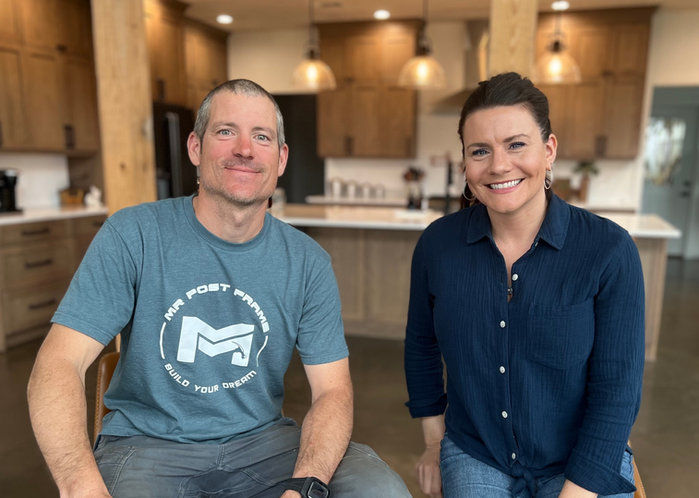The Barndo Build | Day 1: Walkthru + Layout + Setting Piers| Ep 1 & 2
- MR Post Frame

- May 13, 2024
- 3 min read
Welcome back to the blog. For those of you who may be new, my name is Paul, and today we're kicking off a new project. This property, named Westbury Acres by our clients, belongs to Ryan Nor, known for his lawn care business. We're embarking on constructing a 56 by 80-foot building for Ryan and his wife. Half of the structure will serve as a two-story residence while the other half will be a shop—a rather exciting endeavor.

The building features a charming wrap-around porch and stands tall with two stories. The downstairs will house a master bedroom, while upstairs, Ryan will have his studio. The shop itself is sized at 56 by 56 feet, boasting a 19-foot sidewall, making it quite spacious yet challenging to construct. Nonetheless, we're enthusiastic about the project and plan to document the entire journey from laying the footings, which is set to commence next week, to the completion of the build.
In this series, we're changing up our approach by providing semi-live updates, keeping you informed along the way. The Nors' have opted for bright white siding paired with a charcoal roof, a striking combination that promises to enhance the beauty of the surroundings.

The very first, primary task is laying out and drilling footings. Let me emphasize, layout is the pivotal step in your build process. It sets the tone for everything that follows. To begin, we establish a reference line. Last night, after consulting with the client, we determined the front of the building. So, we're starting by running a string line from point A to point B.
Now, as for the specifics, this building is 80 feet long. We'll mark points accordingly. We have to set up batter boards to run our string lines. With the front established, we leave it fixed, and then, at each corner, we position a board across to guide our string lines. Once those are set up, you need to make sure your corners are all square. We're using the 3-4-5 method to ensure the diagonals are correct.
Now, onto the width. We're verifying we're close to 80 feet. With the length and width established, we've squared the building.

Moving on, we adjust our batter boards with precision, and then, we'll start marking out our holes. A quick note: we used the Pythagorean theorem to find the diagonal, then aligned the corners accordingly. As for marking pier locations, we make all posts eight feet on center, which simplifies everything. As we mark, remember, these measurements are from post center to post center. We take care with measurements, especially considering the garage door locations. A three-inch adjustment here means ensuring doors fit properly.

Next, we drill and set piers. We're ensuring everything is level and sturdy. We put the forms in the holes we just drilled and make sure everything is ready for concrete. We typically like to do concrete the very next day after drilling. This ensures there is minimal moving around before concrete comes.
We've laid out 34 footings for a 56 by 80 building with 19-foot sidewalls. We're prepared for concrete. We've even added extra supports given the size of the building and the weather conditions we've been experiencing lately.
And remember to subscribe to our YouTube channel! Here at MR Post Frame, we specialize in building post-frame homes. Feel free to explore our DIY post-frame home series on the channel o our blog for inspiration. Additionally, if you're considering designing your own post-frame home or have questions about the process, check out backfortybuildigns.com
Thank you,
MR Post Frame

Patreon Group:
Interested in tackling your build on your own? If you want to explore the possibility of being your GC or self-building, our Patreon membership is for you! It's a community of like-minded people offering support, discounts, Q/A, and more.







Comments